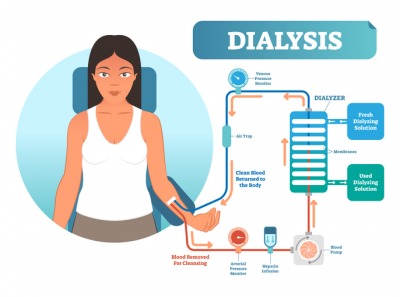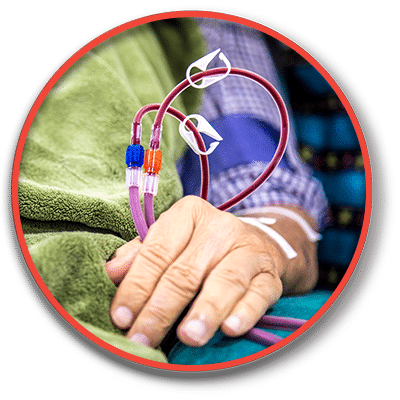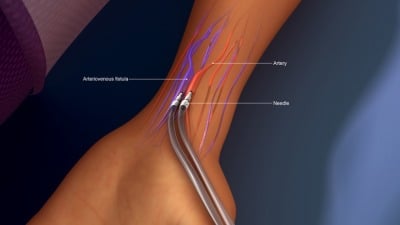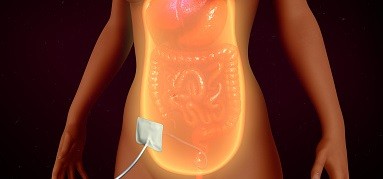WHAT IS DIALYSIS ACCESS CARE AND MANAGEMENT?
OVERVIEW OF DIALYSIS
Located in the abdomen, the human body has two kidneys that serve a vital role for our survival. The kidneys filter around 120-150 quarts of blood daily and produce 1-2 quarts of urine, which removes extra fluid and waste from our bodies. The kidneys are critical in the management of electrolyte levels and are integrally involved in regulating blood pressure, bone metabolism, and red blood cell production. Kidneys may fail for a variety of reasons, but when they do, a transplant or initiation of dialysis is essential. Dialysis involves the rapid exchange of blood with external filtration and is the most common treatment for kidney failure.


THERE ARE TWO TYPES OF DIALYSIS:
HEMODIALYSIS
Hemodialysis involves taking the blood from the body, filtering it through a machine, and then returning it to the body.

PERITONEAL DIALYSIS
Peritoneal Dialysis involves the administration of a special fluid directly into the abdomen through a small permanent catheter that enters the abdomen. The fluid similarly removes waste and balances electrolytes through small blood vessels that line the abdomen. The fluid is later drained through the same abdominal catheter.

For long-term hemodialysis, an Arteriovenous Fistula is a surgically created high flow circuit formed by connecting an artery to a vein. This is most commonly performed in the arm, but they may be created elsewhere as needed (e.g., leg or groin). This connection forces high velocity blood flow directly from the artery into the vein, which ultimately returns blood to the heart. The fistula is located close to the skin where it is easily accessible for dialysis. An Arteriovenous Graft is a synthetic tube-shaped material that is used to connect an artery with a vein when the vein is absent or too small to create a functioning fistula. The graft is similarly brought close to the skin so that it is easily accessible for dialysis.
Regardless of whether a fistula or graft is present, these circuits may develop narrowings or blockages, which can lead to compromised function or overt failure (blockage). Accordingly, to maintain their patency and function they require maintenance. Fortunately, treatment typically does not require surgery and can be performed in an outpatient, minimally-invasive fashion.
HOW CAN WE HELP WITH YOUR DIALYSIS CARE?
Your dialysis treatments will be optimized when your access is functioning properly. To this end, your nephrologist will advise taking preventative measures, including knowing the signs and symptoms of a dysfunctional access. Over time, you will become familiar with the normal feel and sounds of your access site. Changes in the vibration or pulsation of the access or unusual pitch changes, whistles, or coughing sounds may indicate a problem. At New England Endovascular Center, we provide minimally invasive treatments to correct access problems.
Call our office today to schedule a consultation at 413-693-2852.
Our providers are nationally recognized experts in minimally invasive therapies for treating Dialysis Access Care and Maintenance.
We provide fistula maintenance to patients throughout Western, MA and Northern, CT.
To learn more about treatments available at New England Endovascular Center call 413-693-2852 to make an appointment.
